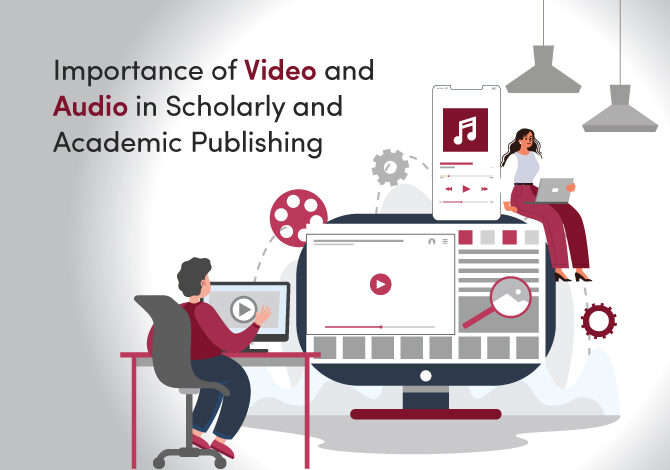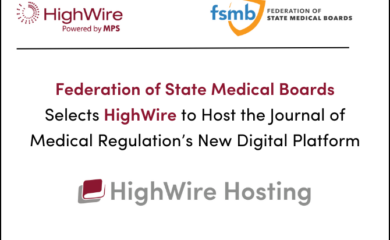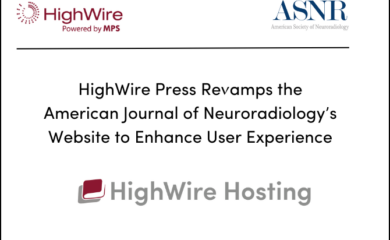The recent HighWire Best Practice webinar on the growing importance of video in scholarly publishing made me think about my early experiences publishing video content, first on CD-ROM and then on the Internet. In the 1990’s I joined a start-up called SilverPlatter Education where we produced and published educational content for physicians on CD-ROM. I worked closely with a division of the American Medical Association called American Medical Television (AMT), which provided us with continuing medical education accreditation as well as access to video content. The purpose of the collaboration was to convert their analog video content to digital, and to integrate useful video clips into interactive multimedia programming. The problem was that most of the video from AMT was people talking, which made for fine television, but was not particularly compelling as part of an interactive learning product.
Video was much more useful when it showed procedures like surgical techniques, or diagnostics like ultrasound, so we shifted the editorial focus to more visual disciplines. However, the problem here was that the video existed in isolation on the CD-ROM, which meant it was useful for its purpose, but was not discoverable or reusable. There was another problem with video back then; when we brought that content to the Internet, it was hugely disappointing because bandwidth in the late 90’s and early 2000’s made video and audio undependable as a medium, not everyone had the equipment or the modem speed.
Today video and audio content on the Internet is omnipresent, YouTube and TikTok dominate the industry, even scientists are producing TikTok videos. Platforms like Zoom are essential for communication and collaboration, and new specialized platforms that provide full-service, online conference functionality have multiplied. This has created new opportunities for commercialization and distribution of this live content. With so few technical restrictions, videos are being used in scholarly content to a much greater extent and for a wider range of purposes. This means that, like other scholarly content, video content requires agreed metadata standards to enable machine readability, it needs indexing for categorization in repositories and discoverability on the Internet, it needs taxonomies and ontologies applied so that tools using artificial intelligence can have a semantic understanding of the material.
Dylan Ruediger, senior analyst at Ithaka S+R, was asked to discuss the work he and his Ithaka colleagues have been engaged in, which primarily focuses on recordings and live streams of conferences and webinars as types of scholarly communication (minute 6:55). The global pandemic has created a situation where this sort of video content has gone from being a byproduct of live, oral presentation, to a primary destination because of the absence of live events. Dylan reviewed two projects being conducted at Ithaka S+R, one on the interest of streaming media licensing as viewed by university libraries, the other on the future of scholarly meetings as viewed by scholarly societies.
The first project examined how libraries make decisions on what kind of video content they license, what they think of the features they see or would like to see, and why they make the decisions on what they purchase. Dylan covers the research in more detail in the webinar, but the initial take away is that university libraries still think of video as mostly useful for instructional purposes, supporting teaching and learning, rather than supporting research. A final report is due out soon.
The second project on the future of scholarly meetings included 17 scholarly societies who participated in a series of workshops to chart a future for scholarly meetings based on the pandemic-forced experiences of holding remote meetings over the past few years. These societies have traditionally been responsible for organizing academic conferences, which means they have access to, or in some cases own, conference content. Faced with shrinking membership and changes in the commercial viability of scholarly publishing, societies that produce video content now find new opportunities that help alleviate some of the effects brought on by those challenges.
A number of commercial organizations are now working with societies and other organizations to enhance content captured at conferences and on webinars, including strategies to make content more discoverable. Discoverability of video content relies on having standardized metadata and on having processes for indexing transcripts. Bill Kasdorf, principal of Kasdorf and Associates and one of the co-chairs of NISO’s Video and Audio Metadata working group, discussed how the soon-to-be-published NISO recommended practice can improve communication across multiple related industries that produce and distribute video and audio content (minute 19:45).
The focus of the recommended practice is facilitating the discovery and the delivery of video and audio assets in order to improve the interchange of those assets between different organizations. Because different industries already have their own, deeply embedded metadata schemas, it would be unrealistic to create a standard that everyone would adopt. Instead, the working group created a sort-of Rosetta Stone that could be used to translate between eight different commonly used metadata models, MARC, MODS, PBCore, EBUCore, IPTCVMD Hub, Dublin Core, Common Metadata, and Schema.org. In the end, they recommended 15 global metadata properties shared by all of the models. They also identified six domains, Education, Events, Journalism, Libraries/archives, Publishing, and Research, that required additional, domain-specific metadata terminology.
Discoverability of video content, like that described by Dylan earlier in the webinar, should be much improved once this recommended practice is approved and adopted. However, as useful as this high-level metadata will be, the video and audio content itself also needs to be searchable and findable. Marjorie Hlava, president of Access Innovations, used two case studies to illustrate the importance of sematic metadata in particular, as this provides access to the meaning of the content (minute 37:04). Margie explained that video transcripts need to be turned into text so that subject tags using a controlled vocabulary can be applied. She also pointed out that it is most useful when those tags are associated with timestamps in the video so that you can find the snippet of the video where the topic was mentioned. There are now numerous tools that automate the process of transcription and tagging, and various controlled vocabularies can be used in the indexing. The end result is enrichment of individual portions of the video content, for example, those snippets can be classified for retrieval or used as an AI training set.
Integrating video into scholarly content is in wide use today, and my colleague, Oliver Rickard, product director for HighWire’s hosting platforms, went through a publisher survey that he recently conducted (minute 53:20). The survey asked: “Why do publishers incorporate video into their content?”; “How are they doing this?”; “What challenges do they face?”; and “What are their hopes and dreams for the future of video?” The Royal College of General Practitioners conduct author interviews and create podcasts and YouTube videos to promote those research articles on multiple platforms like Twitter, Facebook, in blogs, newsletters and press releases. Springer Publishing uses video for instructional purposes, such as clinical procedures, which is embedded in the content, and this has increased the uptake of their textbooks by instructors who integrate those videos into their coursework. McGraw Hill has found that the use of video helps the audience better understand the content, it makes the material more engaging and impactful because it brings the content to life, and it enhances the text.
All of these publishers illustrate the growing usefulness of video and audio content being studied by Dylan and his colleagues. It is clear that the metadata work being done by the NISO working group described by Bill, and the indexing and tagging described by Margie, will help these publishers utilize their video content more effectively. The Best Practice webinar provides much more detail on all of these points. I encourage you to take some time to watch the video on YouTube. I have provided timestamps to help you navigate to the portions of the webinar that you might find most interesting. There is also a Q&A featuring questions from the audience along with general discussion amongst the presenters (minute 1:09:00).
Reach out to us to let us know your thoughts on the importance of video and audio content in the scholarly and academic publishing.
By Tony Alves



